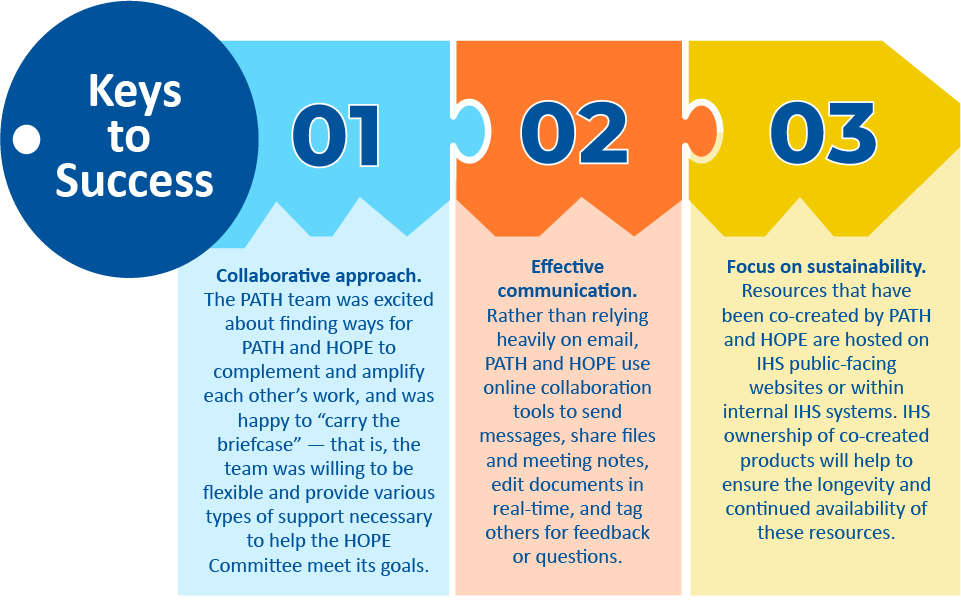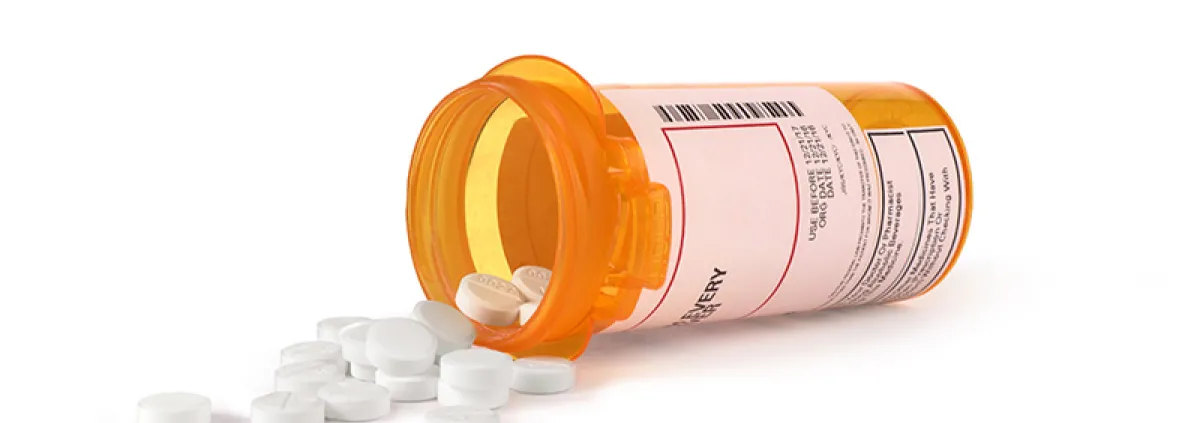The American Indian Alaska Native Healthcare Quality Initiative (AIANHQI), part of the Centers for Medicare & Medicaid Services (CMS) Quality Improvement Organization (QIO) Program, is dedicated to improving population health and the quality of health care among American Indian and Alaska Native communities. The Partnership to Advance Tribal Health (PATH), led by Comagine Health, works with tribal communities and 24 Medicare-certified Indian Health Service (IHS) managed hospitals to address patient safety, quality of care transitions, behavioral health outcomes and public health emergencies.
One of CMS’s goals for PATH’s work is to reduce and prevent opioid adverse events. To achieve this goal, PATH partnered with the IHS National Committee on Heroin Opioids and Pain Efforts (HOPE Committee) to co-create culturally responsive resources for tribal communities. This collaborative enables each group to amplify their reach and impact through: enhancing capacity to address opioid adverse events, avoiding duplication of efforts and ensuring alignment of IHS and CMS behavioral health priorities. The co-developed products include community-facing naloxone materials, naloxone training for school officials and first responders, opioid surveillance dashboard support and an opioid stewardship plan template. Because IHS serves as both a medical service provider and public health agency, the partnership extends the reach of PATH efforts through encouraging multi-level intervention implementation at the system, facility and community levels.
Establishing a Partnership
The HOPE Committee consists of IHS professionals and subject matter experts including pharmacists, physicians, behavioral health providers and nurses. The committee works to develop and promote appropriate and effective pain management interventions, reduce overdose deaths from heroin and prescription opioid misuse and improve access to culturally appropriate treatment.
United around the shared goal of decreasing pain and harm caused by opioids in tribal communities, PATH and HOPE identified opportunities for collaboration and alignment of priorities, focusing especially on naloxone availability and opioid stewardship. They then developed a shared work plan and timeline. Both groups bring complementary skills and resources to the partnership. HOPE is an established, high-functioning entity with subject matter expertise, strong relationships and knowledge of IHS operations, but committee members have limited time and resources to develop tools or materials. The PATH team helps to fill this gap by providing creative, content, logistical and project management expertise.
Naloxone Messaging
In collaboration with the HOPE Committee, the PATH team developed a toolkit to encourage co-prescribing of naloxone with opioid medications, and distributed these toolkits to facilities in early 2023. The toolkit includes a “Naloxone Keeps the Circle Strong” community poster that lists common signs of an opioid overdose and encourages a call to action: “See the signs and give naloxone. Talk to a pharmacist or nurse today.” A goal of this messaging is to normalize the conversation around naloxone. The toolkit also includes a Pharmacist Guide with a script for starting conversations with patients about naloxone. The script describes what an overdose looks like, and explains what naloxone is and why it is important. The goal of these scripts is to provide pharmacists with a way to begin the naloxone conversation. Recommending a co-prescription of naloxone can be a sensitive topic and may be uncomfortable to initiate. The guide provides a starting point for an open discussion with patients and families on naloxone. To date, all PATH facilities received copies of the posters and scripts. Additionally, these materials are now housed on the IHS website and were disseminated through the HOPE newsletter.
Opioid Surveillance Dashboard Support
Hospitals and prescribers can use opioid prescribing data available in the IHS Opioid Surveillance Dashboard to inform local opioid stewardship initiatives and qualitative improvement strategies. This data tool, and the corresponding materials, were rolled out in phases in 2022. PATH team members host regular dashboard office hours, led by IHS experts, where facility champions discuss their ongoing opioid mitigation tests of change and their successes and challenges in applying dashboard resources to these projects. Office hours attendees come from IHS Headquarters, Area Offices, and facility settings, and include quality managers, pharmacists, clinical directors and more. The PATH team developed several resources to promote awareness of the dashboard and provide technical assistance to dashboard users:
- A brief guidance document defines the six measures included in Phase I of the dashboard.
- Educational videos provide an overview of the dashboard, information on how to obtain access to the dashboard and guidance on how to incorporate data into opioid stewardship plans.
- Monthly virtual office hours allow users to ask questions about the dashboard, understand dashboard capabilities and address different dashboard use scenarios. The PATH team manages the registration, logistics and technological support for these sessions, allowing the IHS subject matter experts to focus on addressing users’ questions, such as how to access functions to create meaningful data visualizations for potential quality improvement opportunities.
Opioid Stewardship Plan Template
In summer 2023, PATH and HOPE will roll out an interactive template that hospitals can use to develop customized opioid stewardship plans. The tool will allow users to enter information in response to prompts and then produce a PDF document of their customized action plan specific to their facility’s opioid stewardship goals. The template allows the plan to be a living document, partially modified or amended as needed. An easily updated planning document can be used to guide improvement efforts in real time, and reduces the tendency for such plans to be a yearly exercise unconnected to relevant strategies and efforts.
Keys to Success

A collaborative approach, effective communication and a focus on sustainability have helped to foster a fruitful partnership between PATH and HOPE.
- Collaborative approach. The PATH team was excited about finding ways for PATH and HOPE to complement and amplify each other’s work and was happy to “carry the briefcase” — that is, the team was willing to be flexible and provide various types of support necessary to help the HOPE Committee meet its goals.
- Effective communication. Rather than relying heavily on email, PATH and HOPE use online collaboration tools to send messages, share files and meeting notes, edit documents in real-time and tag others for feedback or questions.
- Focus on sustainability. Resources that have been co-created by PATH and HOPE are hosted on IHS public-facing websites or within internal IHS systems. IHS ownership of co-created products will help to ensure the longevity and continued availability of these resources.
For more information, visit https://comagine.org/program/partnership-to-advance-tribal-health.
This material was prepared by The Bizzell Group (Bizzell), the Data Validation and Administrative (DVA) contractor, under contract with the Centers for Medicare & Medicaid Services (CMS), an agency of the U.S. Department of Health and Human Services (HHS). Views expressed in this material do not necessarily reflect the official views or policy of CMS or HHS, and any reference to a specific product or entity herein does not constitute endorsement of that product or entity by CMS or HHS. 12SOW/Bizzell/DVA-1113-07/18/2023

